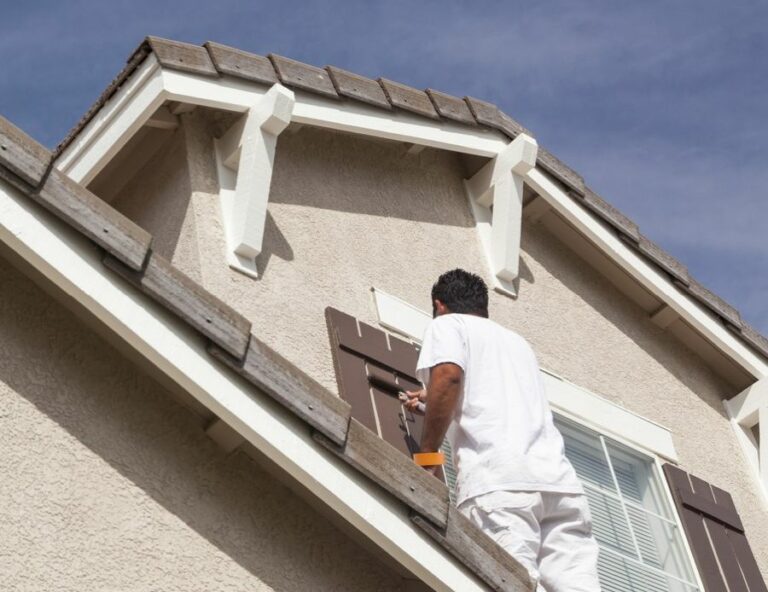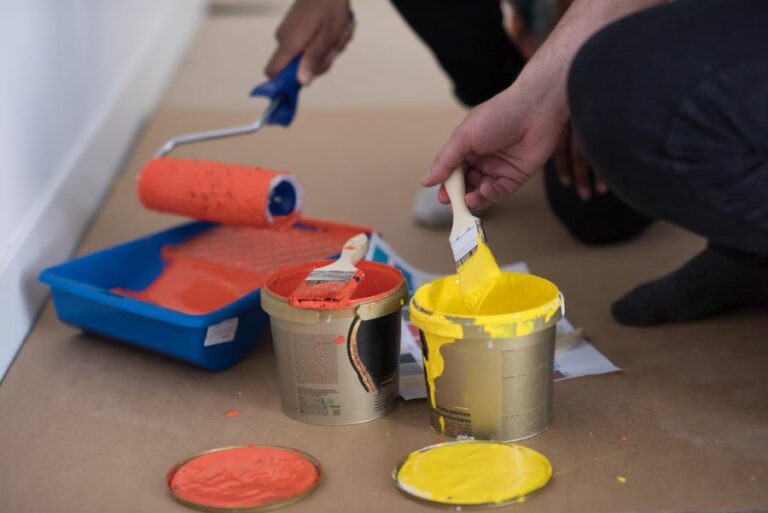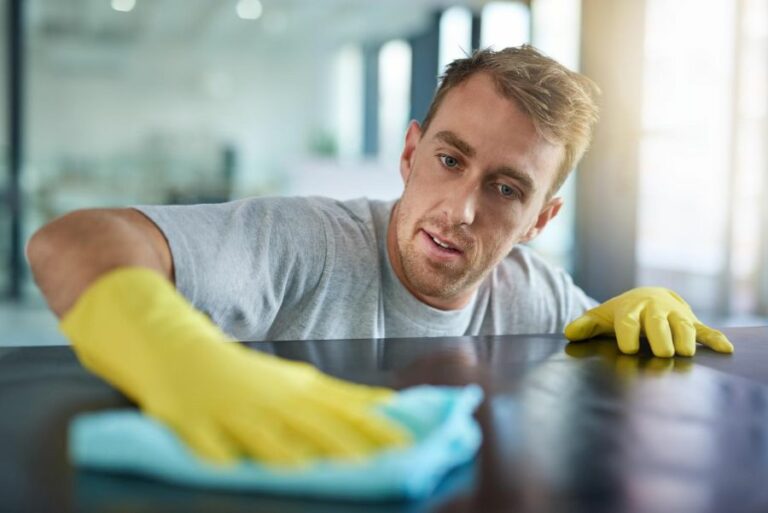Best Paint Strippers: Surface Preparation. What Pros Say
When choosing the best paint strippers for surface preparation, we understand the challenge of navigating through countless products and techniques. The secret to a flawless paint job lies in the foundation work, and that’s where we come in. We have conducted extensive research and tested a variety of solutions, providing you with expert advice on the top paint strippers to achieve optimal results.
Best paint strippers: surface preparation:
Surface preparation is essential for painting, refinishing, or restoring surfaces. The right paint stripper helps ensure project success. Two main types of paint strippers exist chemical (e.g., methylene chloride-based, bio-based, caustic-based) and mechanical (e.g., sanding, scraping, abrasive blasting). Consider factors like surface material, paint type, safety, application method, and drying time when choosing a paint stripper for your project.

Uncover the secret to perfect surface preparation with our expert guide on the best paint strippers available. Find the ideal solution for your needs and learn insider tips to ace your DIY project. Keep reading to achieve flawless results and fuel your passion for painting!
Contents
- 1 Top Paint Strippers: Perfect Surface Preparation
- 2 Expert Paint Stripping Tools and Techniques
- 3 Leading Paint Stripping Solvents: A Comparison
- 4 Post-Paint Stripping Surface Cleaning Methods
Top Paint Strippers: Perfect Surface Preparation
• Introduction: Importance of Surface Preparation
Surface preparation is a crucial step in various projects such as painting, refinishing, or restoring surfaces. Choosing an appropriate paint stripper plays a significant role in the overall success of the project.
Here, we will discuss the different types of paint strippers available in the market, their specific applications, and the considerations you should keep in mind while selecting the right product for your needs.
• Types of Paint Strippers
– Chemical Paint Strippers
Chemical paint strippers are effective in removing paint from various surfaces, such as wood, metal, and concrete, to name a few. These chemical solutions soften the paint, allowing it to be scraped off easily. Some common types of chemical paint strippers include:
- Methylene Chloride-Based Strippers: These are fast-acting and highly effective paint removers, but their toxic fumes and potentially health-damaging properties make them less popular among DIY enthusiasts.
- Bio-Based Paint Strippers: Made from naturally occurring substances, these paint strippers are less toxic and environmentally friendly. They are ideal for DIY enthusiasts and those who prioritize safety over speed.
- Caustic-Based Strippers: These products contain strong alkalis that react with paint to form a soap-like substance. They are effective in removing multiple layers of paint but can be harsh on surfaces like wood.
– Mechanical Paint Strippers
Mechanical paint strippers involve physically removing paint from surfaces using tools like sanders, scrapers, or abrasive pads. These methods are effective in removing paint from large or flat areas and can be less messy compared to chemical strippers.
- Sanding: Sanding involves using abrasive materials like sandpaper or sanding pads to remove paint. It is labor-intensive and can be time-consuming, but it allows for greater control over the process.
- Scraping: Scraping entails using a scraping tool, such as a putty knife or a paint scraper, to physically remove paint from surfaces. This method is less expensive compared to sanding but can result in potential damage to the surface if not done carefully.
- Abrasive Blasting: Abrasive blasting involves projecting a stream of abrasive particles against a surface to remove paint. This method is best suited for larger surfaces like walls, floors, or buildings.
• Factors to Consider When Choosing a Paint Stripper
– Surface Material
The first consideration when selecting a paint stripper is the material of the surface you will be working on. Some paint strippers are designed specifically for wood, while others may be formulated for metal, concrete, or other materials.
It’s crucial to choose a product that is compatible with the surface you’re working on to prevent any damage or ineffective results.
– Type of Paint
The type of paint you are trying to remove also plays a significant role in the choice of paint stripper. Oil-based, water-based, and epoxy paints may require different stripping techniques or products, so be sure to check the compatibility of the paint stripper with the paint type before use.
– Safety Concerns
Chemical paint strippers containing toxic ingredients can pose potential health and safety risks. It’s essential to consider these factors when choosing a product, especially if you have children, pets, or other vulnerable individuals in your vicinity.
Opt for eco-friendly or low-VOC paint strippers if possible, and always use appropriate personal protective equipment (PPE) like gloves, goggles, and masks when working with chemicals.
– Application Method and Ease of Use
Some paint strippers are designed for specific application methods, such as spray bottles or brushes, so take your preferred method into account. Additionally, consider the ease of use of the product and your level of experience.
Mechanical methods can be more straightforward for those with limited experience, while more experienced users may feel comfortable using harsher chemical products.
– Drying Time and Workability
Drying time and workability are essential factors to consider, especially when working on large surfaces or time-sensitive projects. Some paint strippers have faster drying times but require more frequent reapplication, while others may provide a longer workability period.
Choose a product that best fits your needs and the demands of your project.
• Recommended Paint Strippers
Based on our research and experience, we recommend the following paint strippers for different surfaces and applications:
- For Wood Surfaces: Citristrip Paint & Varnish Stripping Gel is an excellent option for wood surfaces due to its effectiveness in removing paint and varnish, as well as its pleasant citrus scent, low-VOC formula, and biodegradability.
- For Metal Surfaces: Klean-Strip Aircraft Paint Remover is a powerful option for metal surfaces, effective in removing multiple layers of paint, including epoxy and urethanes. Though it contains methylene chloride, appropriate PPE should be worn while using this product.
- For Concrete Surfaces: Soy Gel Professional Paint Remover is a biodegradable, non-toxic product suitable for concrete surfaces. It effectively removes multiple layers of paint and does not emit any harsh fumes.
• Conclusion
Choosing the right paint stripper can significantly impact the success of your surface preparation project. Ensure you consider factors like surface material, type of paint, safety concerns, application method, and drying time before selecting a product.
By finding the proper paint stripper for your specific project, you’ll end up with a well-prepared surface, ready for the next step in your renovation or restoration process.
Product Name | Type | Key Features | Best For |
|---|---|---|---|
Citristrip Paint and Varnish Stripping Gel | Gel | Non-toxic, biodegradable, easy to use | Wood, metal, and masonry surfaces |
Dumond Smart Strip Advanced Paint Remover | Liquid | Odor-free, safe, environmentally friendly | Removal of multiple layers of paint |
3M Pro Strength Liquid Paint and Varnish Remover | Liquid | Fast-acting formula, effective on multiple surfaces | Wood, metal, concrete, and more |
Rust-Oleum Aircraft Remover | Spray | Fast-acting, non-drip formula | Automotive finishes, acrylics, lacquers, and more |
Soy Gel Professional Paint Remover | Gel | Safe, non-toxic, biodegradable | Wood, concrete, stone, and brick surfaces |
Expert Paint Stripping Tools and Techniques
As a paint removal expert with years of experience, I’ve learned the ins and outs of the various methods and substances available for removing paint from various surfaces, including wood, metal, and masonry.
• Chemical Paint Strippers
One of the most common methods professionals use to strip paint is chemical paint strippers. These products break down the paint’s chemical bonds which make the paint easier to remove. The following are some popular types of chemical paint strippers professionals use.
1. Solvent-based Strippers
Solvent-based strippers are effective for removing oil-based paints, varnishes, and polyurethane. These strippers contain active ingredients like methylene chloride or acetone, which dissolve the underlying paint. I recommend Owatrol Marine Strip as an effective solvent-based paint stripper.
2. Bio-based Strippers
A popular choice for environmentally conscious professionals, bio-based paint strippers are made from natural and non-toxic materials like soy, terpenes, and other plant-based solvents. These products are typically slower-acting but generate less harmful fumes than their solvent-based counterparts.
I recommend Soy Gel Paint Remover for those looking for an effective and eco-friendly option.
3. Caustic Strippers
Often used for masonry paint removal, caustic strippers contain strong alkaline compounds like sodium hydroxide that break down the paint layers.
I recommend using caution when working with caustic strippers, as they can cause burns when in contact with the skin. Savogran SuperStrip is my top recommendation for a caustic paint stripper.
• Mechanical Paint Stripping Methods
In addition to chemical strippers, professionals also use various mechanical methods to remove paint, especially for larger or more complex projects.
1. Sanding
Sanding is an effective way to remove paint from wood and metal surfaces. Professionals use electric sanders, such as orbital or belt sanders, to quickly strip paint from larger areas. Fine-grit sandpaper or sanding blocks can be used for detail work.
For those interested in an exceptional sander for their paint removal projects, I recommend the DeWalt Random Orbital Sander.
2. Scraping
Using a paint scraper is a traditional method for paint removal. A sharp, high-quality scraper makes the job much more efficient. Care should be taken not to damage the underlying surface, especially when working with wood. My go-to scraper is the Bahco Ergo Paint Scraper.
3. Heat Guns
Professional-grade heat guns, like the Wagner Furno 750, can also be used to strip paint. The heat gun is directed at the paint surface, causing the layers to blister and loosen. The softened paint can then be easily scraped off. This method is especially suitable for removing thick or multiple layers of paint.
4. Abrasive Blasting
For large-scale or industrial paint removal, abrasive blasting is often used. This process involves using compressed air to blast an abrasive material, such as sand, glass beads, or baking soda, at the paint-covered surface.
This process can be aggressive. Therefore, it should be used with caution on delicate surfaces.
• Safety Considerations
It’s essential to prioritize safety when working with paint strippers or mechanical equipment for paint removal. Always wear the appropriate protective clothing, including gloves, goggles, and a mask or respirator to protect against harmful fumes, particles, or contact with caustic substances.
Before starting any paint removal project, make sure to carefully read and follow the manufacturer’s instructions regarding the safe use and handling of the chosen paint stripping products or equipment.
• In Conclusion
Professionals use a combination of chemical and mechanical methods to strip paint depending on the surface, the type of paint, and the scope of the project.
By exploring the various options and recommendations listed in this guide, you will be able to choose the most effective and safe method for any paint removal task.
Leading Paint Stripping Solvents: A Comparison
As an experienced professional in the field of paint stripping, I am well-versed in the extensive range of paint solvents available on the market. Choosing the right solvent is essential to efficiently and effectively remove paint from various surfaces.
• Caustic-Based Solvents
One of the most commonly used paint solvents are caustic-based paint removers.
These solvents include substances like sodium hydroxide (lye) and potassium hydroxide, which work by breaking down the chemical bonds in the paint.
– Advantages
- Highly effective at removing multiple layers of paint
- Works well on a variety of surfaces, such as wood and metal
– Disadvantages
- Can be corrosive and may damage the underlying material if not properly neutralized
- Prolonged contact with the skin can cause irritation
- May not be as effective on water-based paints
I recommend using caustic-based solvents for heavy-duty paint-stripping tasks where the removal of multiple layers of paint is required.
• Solvent-Based Paint Removers
Solvent-based paint removers, also known as paint thinners, are another popular choice for stripping paint. These solvents contain chemicals like acetone, toluene, and xylene, which are adept at dissolving paint layers.
– Advantages
- Effective at removing various paint types, including oil-based, alkyd, and epoxy
- Faster evaporation allows for quicker completion of projects
- Can be used on numerous surfaces, such as wood, metal, and plastic
– Disadvantages
- Highly flammable, requiring proper handling and storage
- Prolonged exposure may lead to respiratory and skin irritations
- May not be as effective at removing multiple layers of paint as caustic-based solvents
Solvent-based paint removers are an excellent choice for small-scale projects or surfaces with minimal layers of paint.
• Bio-Based Paint Strippers
A more environmentally friendly option, bio-based paint strippers utilize natural ingredients like soy, corn, and citrus extracts to dissolve paint.
– Advantages
- Non-toxic and safer for the environment
- Typically less irritating to skin compared to caustic and solvent-based removers
- Can be used on wood, metal, and concrete surfaces
– Disadvantages
- Often require longer waiting periods for paint to be removed
- May not be as effective on extremely thick layers of paint or specific paint types
• Mechanical Methods
In some cases, utilizing solvents might not be the best choice. Mechanical methods, such as sanding or scraping, can effectively strip paint without chemicals.
– Advantages
- No need to handle potentially harmful chemicals
- Allows for more control when removing paint from delicate surfaces
– Disadvantages
- Can be labor-intensive and time-consuming
- May cause damage to the underlying surface if not done carefully
Mechanical methods, while not solvent-based, can be highly effective in specific scenarios and allow for a more hands-on approach to paint removal.
• Conclusion
In conclusion, my recommendations for the best paint solvents are as follows:
- Caustic-based solvents for heavy-duty tasks and multiple-layer removal.
- Solvent-based paint removers for small-scale projects and minimal layers.
- Bio-based paint strippers for environmentally friendly paint removal.
- Mechanical methods for controlled and hands-on paint removal without chemicals.
By considering the specific demands of each paint stripping project, selecting the appropriate solvent will make your task more efficient, cost-effective, and successful.
Solvent | Application | Advantages | Disadvantages |
|---|---|---|---|
Methylene Chloride | Professional paint stripping | Fast acting, effective on multiple layers of paint | Highly toxic, potential health/environmental risks |
Caustic Strippers | Commercial paint stripping | Less toxic than methylene chloride, effective on multiple layers of paint | Can darken or stain some wood, corrosive to skin |
Bio-based Strippers | DIY paint stripping, | Eco-friendly, non-toxic, less harmful to user | Slower acting, may require multiple applications |
Heat Guns | DIY paint stripping, small areas | No chemicals required, can be effective on multiple layers of paint | Requires experience, risk of burning/scorching, may release fumes |
Alcohol or Mineral Spirits | DIY paint stripping, small areas or touch-ups | Less toxic than other solvents, readily available | Not ideal for large-scale projects, may require multiple applications |
Post-Paint Stripping Surface Cleaning Methods
Cleaning surfaces after stripping paint can be a daunting task. However, with the right approach and tools, you can ensure a spotless surface, ready for a fresh coat of paint or a new finish.
• The Importance of Thoroughly Cleaning Surfaces
Before we dive into the cleaning process, it’s essential to understand the importance of thoroughly cleaning surfaces after stripping paint. Proper cleaning eliminates small paint particles, dust, and debris that may have accumulated during paint removal.
This ensures a smooth, even surface for the application of new paint or finish and prevents imperfections, adhesion problems, and other issues that could compromise the final result.
• Understanding the Different Types of Surfaces
Identify the type of surface you’re working with before you start the cleaning process. Some common surface materials include:
- Wood
- Metal
- Concrete
- Masonry
- Drywall
- Plastic
Each of these surface materials may require specific cleaning techniques and products, so it’s crucial to know the details of your surface to avoid damage and ensure a pristine finish.
• Tools and Materials for Cleaning Surfaces After Stripping Paint
Preparing the appropriate tools and materials is essential for efficiently cleaning surfaces. Some commonly used tools and materials include:
- Vacuum cleaner or shop-vac with brush attachment
- Clean, lint-free rags or microfiber cloths
- Painter’s tape
- Tack cloth
- Warm water and mild detergent
- White vinegar
- Baking soda
- Wire brush
- Utility knife or scraper
- Sandpaper (various grits)
- Protective gear (gloves, safety goggles, mask)
These tools and materials will help remove any residual paint or debris, smooth the surface, and ensure a clean workspace for the application of new paint or finish.
• Cleaning Surfaces: A Step-by-Step Process
Follow these steps for an efficient and effective cleaning process:
1. Remove Loose Debris and Dust
Start by using a vacuum cleaner or shop-vac with a brush attachment to remove any loose debris and dust from the surface. This will prevent particles from being spread or embedded further into the surface during wet cleaning.
2. Clean with Warm Water and Mild Detergent
Prepare a cleaning solution by mixing warm water with a small amount of mild detergent. Use a clean, lint-free rag or microfiber cloth to apply the solution to the surface. Begin at the top of the surface and work your way down to prevent streaks.
3. Use a White Vinegar Solution for Stubborn Residues
If residues persist after using the detergent solution, mix equal parts white vinegar and warm water. Apply this mixture to the surface with a cloth, focusing on stubborn areas.
4. Tackle Tough Stains with Baking Soda
For challenging stains that don’t respond to the previous cleaning solutions, create a paste by mixing baking soda with water. Apply the paste to the stain and let it sit for a few minutes. Gently scrub the area with a wire brush or scraper, being careful not to damage the underlying surface.
5. Rinse and Dry the Surface
After cleaning the surface, use a clean cloth dampened with water to remove any remaining cleaning product residue. Dry the surface entirely using a clean, lint-free cloth.
6. Scuff and Smooth with Sandpaper
Now, it’s time to smooth the surface by sanding it. Start with a coarser grit sandpaper, then progress to a finer grit to achieve a consistent finish.
7. Dust Off with Tack Cloth
Once you’ve sanded the surface, use a tack cloth to remove any remaining dust. A tack cloth is a sticky cloth designed to pick up small particles, ensuring your surface is free of any debris before you apply new paint or finish.
• Expert Recommendations for Surface Cleaning
From my experience, here are some recommendations to ensure optimal results:
- Change cleaning cloths frequently to avoid cross-contamination and the spreading of debris
- Always wear protective gear such as gloves, safety goggles, and a mask while working with paint removal chemicals and abrasive materials
- Be patient and take your time, especially when focusing on stubborn stains and smoothening the surface
- Test your cleaning solutions on an inconspicuous area of the surface to ensure compatibility and avoid damaging the material.
By following these expert recommendations and using the step-by-step processes described above, you can efficiently clean surfaces after stripping paint, preparing them for a fresh coat or a new finish.
Step | Description |
|---|---|
1 | Gather the necessary supplies: clean rags, water, mild soap, and a nylon brush or sponge. |
2 | Remove any remaining paint and debris using a nylon brush or sponge. Be gentle to avoid scratching the surface. |
3 | Mix a solution of mild soap and water in a bucket or container. Avoid using harsh chemicals or abrasive cleaners. |
4 | Dip a clean rag or sponge into the soapy water and wring it out until it’s damp, not soaking wet. |
5 | Wash the surface thoroughly, making sure to clean all crevices and corners. Rinse the rag or sponge frequently to avoid spreading debris. |
6 | Rinse the surface with clean water using a damp rag or sponge. Make sure to remove any soap residue. |
7 | Dry the surface with a clean, dry rag or cloth. Make sure there’s no water left on the surface, as it can cause damage or encourage mold growth. |







